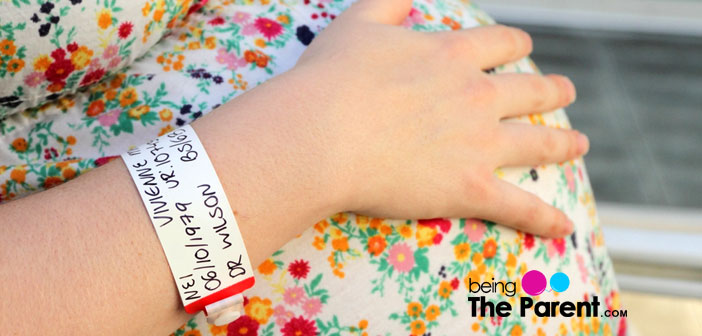
Shoulder Presentation And Delivery
4 min readWritten by Editorial Team

Vaginal delivery is the best option to bring the baby into this world. But there are some instances which make vaginal delivery quite difficult.

When Does The Baby Move In Birthing Position?
Towards the end of the gestation period, the fetus moves into the position to come out of the mother’s womb. This position has a significant role indetermining the level of difficulty or complication during the delivery.
The normally positioned fetus will be like this:
- Head enters the birth canal fist (head engaged)
- Baby’s face will be faced towards the mother’s spine
- Face and body inclined towards one side (right or left)
- The chin and neck stooped towards the chest
- Arms are folded across the chest
All the positions deviated from this position are considered as abnormal. The degree of deviation determines the complications of the delivery. One of such rare obstetric complication that can be fatal for both mother and child is shoulder presentation.
What Is Shoulder Presentation?
Shoulder presentation is an abnormal position of the fetus at the time of delivery. In this position, the fetus lies transversely so that its vertebral column lies perpendicular to the maternal spine. So, the part that enters the birth canal will be the trunk or shoulder or an arm.
In spite of some deviations in the positioning of the fetus, the doctor may try for vaginal birth only if the baby’s head, or buttock, or feet are at the bottom. But definitely not with shoulder presentation. Hence, the vaginal birth will be will be unthinkable for the mother and she has unquestionably to undergo a C-section.
What Are The Causes Of Shoulder Presentation?
Shoulder presentation can occur due to either of maternal or fetal factors.
Some of the factors are:
- Lax abdominal musculature: Most probably due to several previous pregnancies, the abdominal and uterine muscles can get more relaxed. This can reduce their capability to hold the baby in normal position. This inability of the uterine muscle can lead to shoulder presentation
- Contracted pelvis: Abnormally narrow pelvis can cause shoulder presentation
- Uterine over distension: Enlargement of the uterus can occur due to several reasons such as polyhydramnios (excessive amniotic fluid), multiple pregnancies, large baby etc. overly expanded uterus can lead to shoulder presentation
- Uterine abnormalities: Uterine abnormalities such assub-septate uterus (the uterine cavity partitioned by incomplete longitudinal septum), bicornuate uterus (instead of a pear shape, the uterus looks like two horns divided by a septum), or fibroid uterus.
- Placenta Previa: Placenta pervia is a condition in which the placenta partially or wholly blocks the neck of the uterus and prevents the head of the fetus from entering the pelvic brim. Read more about it here
- Polyhydramnios: An excessive amount of amniotic fluid in the uterus is known as polyhydramnios. This condition will let the fetus move freely in the excessive water. This condition can cause shoulder presentation
- Intra uterine fetal death: When the fetus dies inside the uterus before delivery the muscle tone of the fetus degenerates which causes the fetus to fall into the lower portion of the uterus
What Are The Possible Complications Of Shoulder Presentation?
A shoulder presentation generally implies that the baby can’t be born through the vagina. If a woman with this condition is already on labor the complication may increase more. Some of the complications arise with shoulder presentation are:
- Fetal hypoxia and death: Fetal hypoxia occurs when the fetus is lacking the necessary supply of oxygen. This can be a life- threatening condition if necessary measures are not undertaken
- Cord prolapse: It is a condition in which umbilical cord comes out of the uterus before the parts of the fetus. This can result in dangerous conditions like the fall of heart rate in the fetus and changes in baby’s blood pressure. It can also cause brain damage of the fetus
- Obstructed labor: Obstructed labor is a condition in which, though the uterine contractions are happening, the baby is not capable of progress to the birth canal (due to physically block). Neglected obstructed labor is found to be the major reason for the death of mother and child
- Ruptured uterus: Uterine rupture is without a doubt, a life-threatening event for both mother and child. This occurs when the myometrial wall (the middle layer of the uterine wall) is breached during the child birth
- Trauma to prolapsed arm: The possibility of trauma to the arm which prolapses through the birth canal (as the baby is positioned laterally inside the womb) is higher. This can result in damage to that arm that may last life-long of that baby
How Is Shoulder Presentation Diagnosed?
- Inspection of the abdomen by the doctor alone give the first clue as the uterus appears broader from side to side
- The fundal height appears less as the fundus of the uterus (top portion opposite from the cervix) is neither occupied by the head nor by the buttock of the baby
- Feeling the head of the fetus on one side of the abdomen by the mother
- Feeling baby’s rib on vaginal examination when the labor is well progressed
- Arm of the baby become visible outside vagina (prolapsed arm)
How To Ensure Safe Delivery If The Baby Is Lying Laterally?
Theoretically,there are several methods of doing an external cephalic version (turning the baby to the correct position by hand) around 37th week. In some cases, this method was found to be a success. But weighing the complication, performing a c- section is an ideal method to save both mother and child without any life threatening issues.

Editorial Team,
With a rich experience in pregnancy and parenting, our team of experts create insightful, well-curated, and easy-to-read content for our to-be-parents and parents at all stages of parenting.Read more.
Responses (0)
Want curated content sharply tailored for your exact stage of parenting?
Related articles

Cleaning During Pregnancy – Do’s And Don’ts

Powerful Lord Indra Names For Baby Boy With Meanings

Amniotomy During Labor – Why is it Performed, Risks and Complications

What to Expect On the First Appointment With a Gynecologist?

Top 200 Baby Names Starting With Cal

Aromatherapy During Pregnancy – Is it Safe, Methods and Oils to Avoid
Sponsored content
Discover great local businesses around you for your kids.
Get regular updates, great recommendations and other right stuff at the right time.





